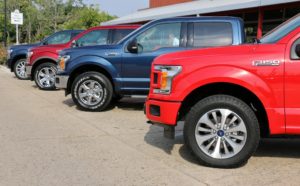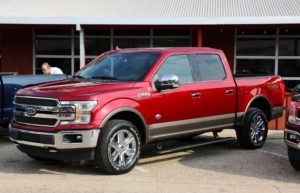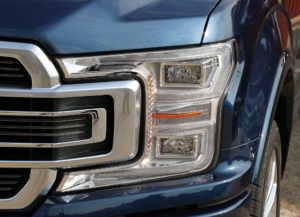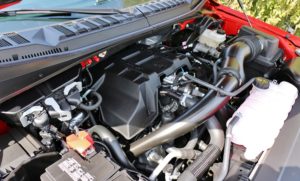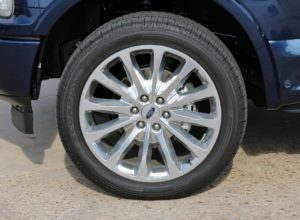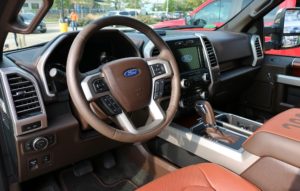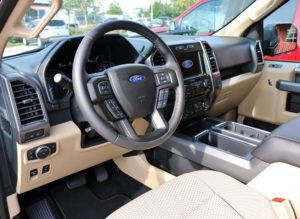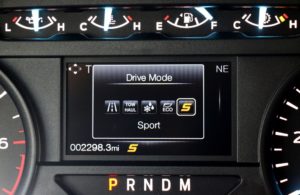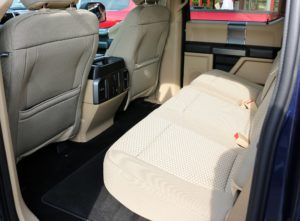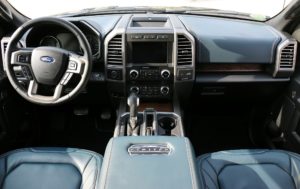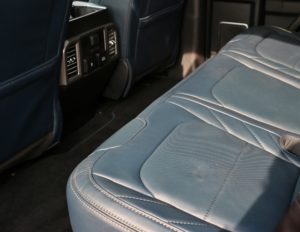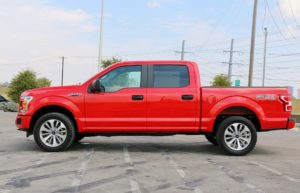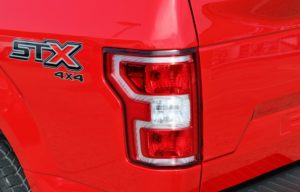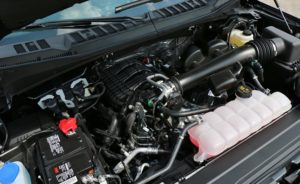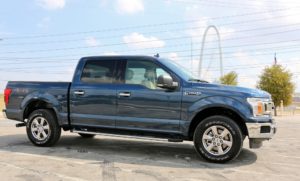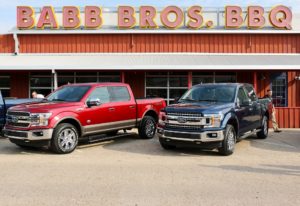2018 Ford F-150: Quick Drive in Dallas
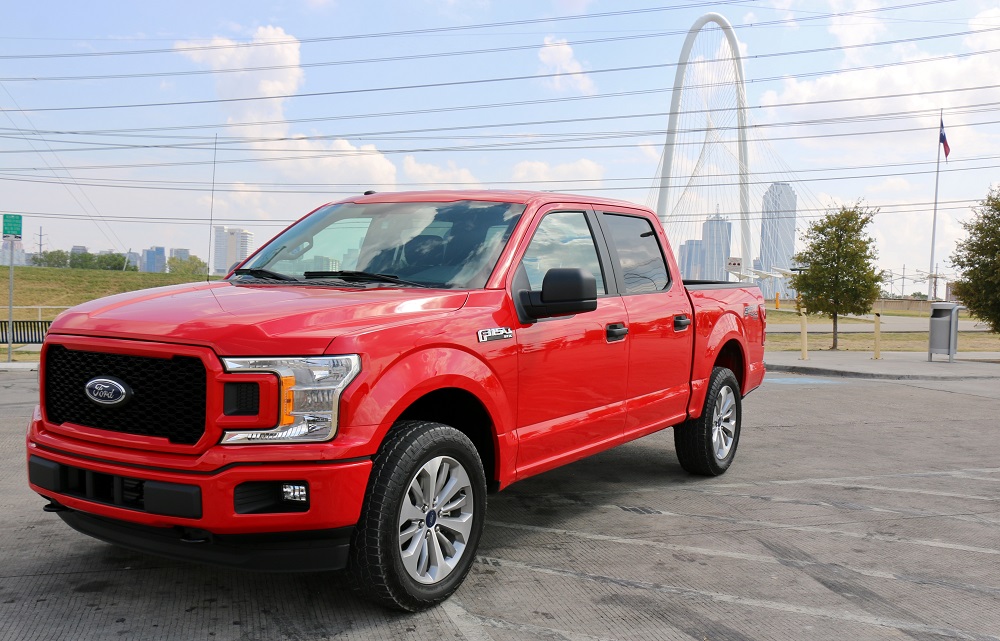
F-150 Online heads to Dallas to experience the 2018 Ford F-150 lineup’s new looks, updated technology, and pumped-up powertrains.
Ford invited me to the State Fair of Texas in Dallas last week to drive the 2018 Ford F-150. The day before the drive, I pulled up to Babb Bros. BBQ to see a row of the facelifted trucks ready to hit the streets and highways.
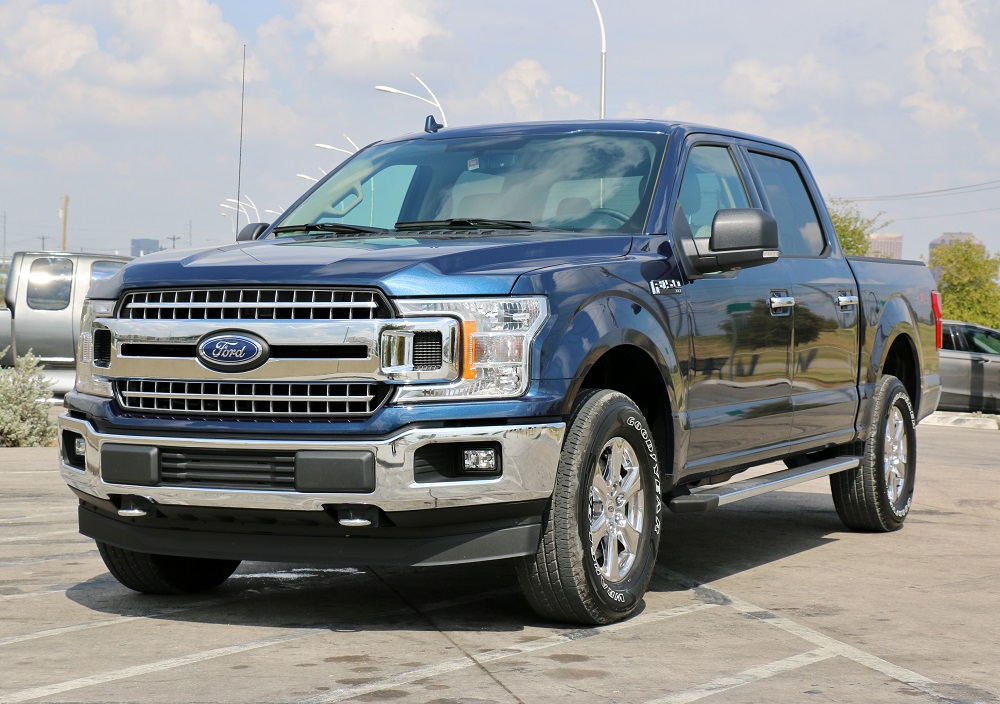
I couldn’t help but flash back to the fall of 2014, when Ford hosted a regional drive of the all-new 2015 F-150 that started in San Antonio and wound through the Texas Hill Country. That truck introduced Ford fans to the new look of the F-150, Ford’s first aluminum-bodied pickup truck, the surprisingly powerful 2.7-liter EcoBoost V6, and several infotainment and convenience features. The 2015 model was a handsome rig with plenty of power, instantly comfortable interior dimensions, and useful technology. Less than a month after I drove the 2015 F-150, the Texas Auto Writers Association named it the 2014 Truck of Texas.
The 2018 trucks I saw in front of me last week built on that solid 2015 foundation and incorporated changes Ford’s engineers have made to the F-150 since then. For 2017, the blue oval squeezed more power out of the 3.5-liter EcoBoost V6, pumping it up to 375 horsepower and 470 lb-ft of torque. It dumped the dated six-speed automatic in favor of a 10-speed gearbox for certain engine options. And let’s not forget the 450-horsepower second-generation Raptor. Who could?
Now, the F-150 is refreshed inside and out. The two-bar grille is simple and bold, and bookended by “C-clamp” headlight casings that seem to be less visually sharp and rigid than the units they replace. The combination makes the 2018 truck look strong yet refined at the same time.
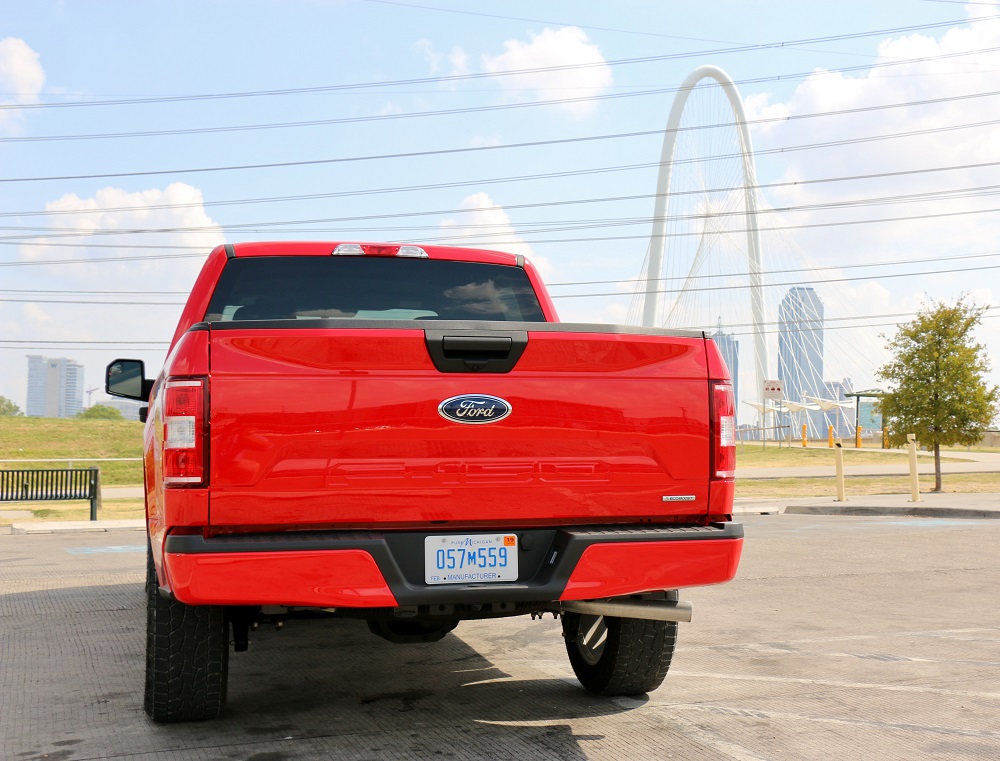
Out back, the basic shape of the tail lights remains the same, but the design of the elements within them has changed. XL, XLT, and Lariat trucks come equipped with an “F-150” stamped into their tailgates, a nod to the 2017 Super Duty. They’re all subtle alterations that have made an already good-looking truck into an even more attractive people/payload/pop-up mover. Buyers of XL, XLT, Lariat, and King Ranch F-150s can dress their trucks up with chrome appearance packages; XL, XLT, and Lariat customers can opt for monochromatic sport bundles.
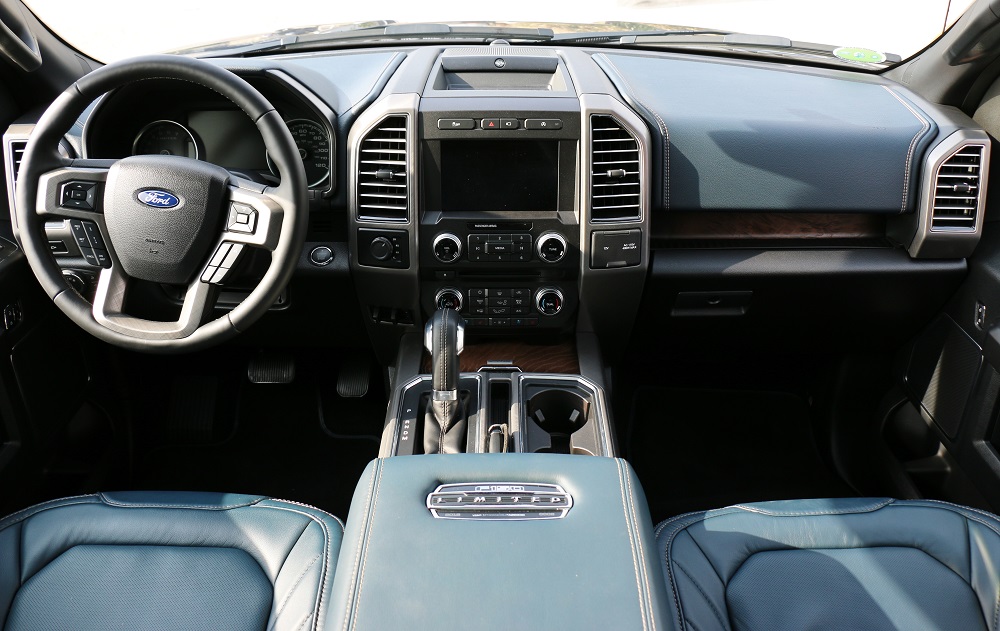
Inside, the notable visual changes are the availability of the Kingsville interior environment for the F-150 King Ranch, Dark Marsala for the F-150 Platinum, and Navy Pier for the F-150 Limited. That last package’s blue leather may be new to this generation of the F-150, but it brings the bench seats of bygone F-150 generations to mind. It’ll be interesting to see how many 2018 Limiteds get ordered with the Navy Pier trim, a bold option in a vehicle segment that tends to have a more conservative customer base.
One of the technological improvements made to the inside of the 2018 F-150 is the addition of stop-and-go functionality to the available adaptive cruise control, which enables the F-150 to maintain a preset distance (and speed) between itself and the vehicle ahead, and automatically bring itself to a complete stop, if necessary. According to Ford, “New segment-first Pre-Collision Assist with Pedestrian Detection is available to help drivers avoid or mitigate collisions with other vehicles and pedestrians.” Buyers can equip certain F-150 trim lines with a 10-speaker B&O PLAY audio system.
The F-150’s subtle alterations have made an already good-looking truck into an even more attractive people/payload/pop-up mover.
Perhaps the biggest update to the F-150’s interior tech is the availability of a 4G LTE Wi-Fi hotspot that can be connected to up to 10 devices. I made sure to use it in an F-150 King Ranch as soon as possible. Like the rest of SYNC 3, it was a breeze to operate. A few taps on my phone and the truck’s center screen was all it took to stop my LG Vista from eating up my data plan. Ford engineers have now cured one of the F-150’s biggest yesteryear hangovers.
The high-output 3.5-liter EcoBoost V6 under the hood of the Raptor and its milder cousin carry over unchanged from 2017. The regular 3.5-liter EcoBoost V6 is the towing king with a max tow rating of 13,200 pounds. Max payload is 3,230 pounds.*
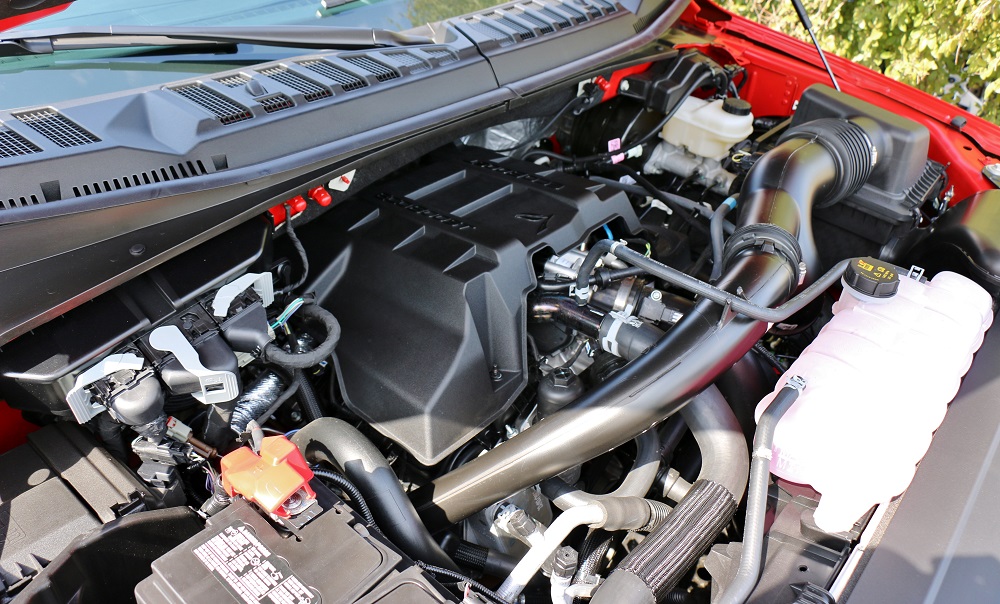
The 2.7-liter EcoBoost V6 gets both port and direct fuel injection, as well as a new lightweight cam, a dual-chain cam drive design, and an electrically activated wastegate. Horsepower stays at 325 while torque shoots up by 25 lb-ft to a flat 400. I felt those on-paper numbers in the form of a firm push back into the driver’s seat. Although the 2.7-liter EcoBoost isn’t the most potent F-150 engine, it’s more than strong enough to stand out.
City fuel economy for 2.7L 4X2 models goes up by 1 mpg to 20; highway fuel economy is still 26 mpg and combined fuel economy remains at 22 mpg. Four-wheel-drive trucks with the 2.7 get better gas mileage across the board: 19 city, 24 highway, and 21 combined mpg. Depending on body style, axle ratio, and drive type, the 2.7 tops out at a 8,500-pound conventional tow rating. Payload peaks at 2,470 pounds.**
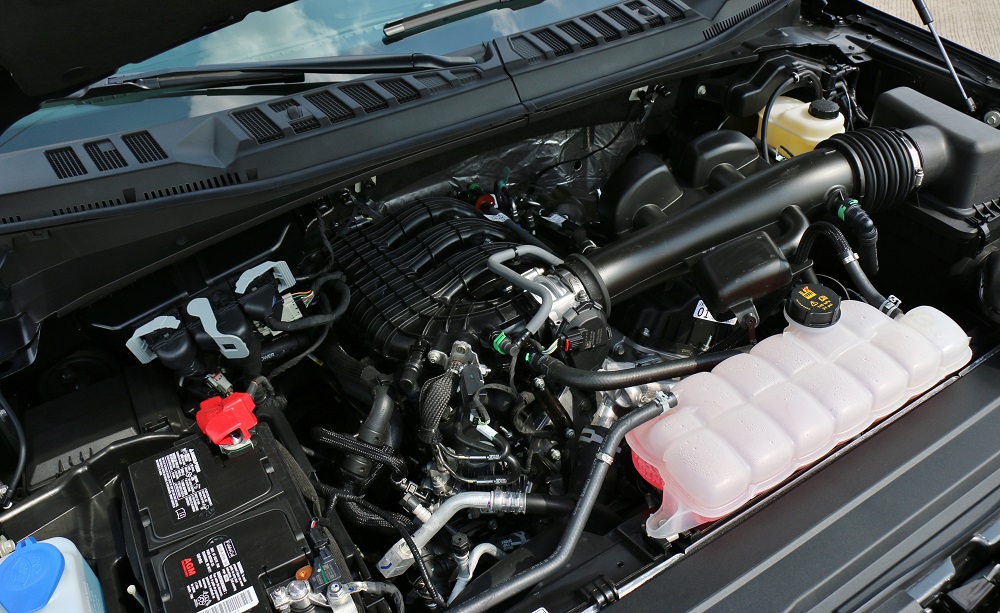
The 5.0-liter V8 also benefits from port and direct injection. That combo increases output to 395 horsepower and 400 lb-ft. Like the 2.7, it’s paired with the 10-speed auto. Fuel economy is up for 2WD and 4WD trucks. Of course, 2WD fuel economy is the best at 17 city, 23 highway, and 19 combined mpg. Conventional towing is limited to 11,600 pounds; max payload is 3,270 pounds.*
A naturally aspirated 3.3-liter V6 is new for 2018. Engineers gave it an all-aluminum block, an upgraded crankshaft, and enhanced bearings. They coupled it to a six-speed automatic. Like its cousins, the 3.3 comes with port and direct injection.
Compared to the outgoing 3.5-liter V6, the 3.3 has eight more horsepower and 12 more lb-ft of torque: 290 and 265, respectively. Two-wheel-drive models are capable of 19 city, 25 highway, and 22 combined mpg. Four-wheel-drive trucks can cover 18 city, 23 highway, and 20 combined mpg. Those are all improvements relative to the old 3.5-liter V6. Max towing for the 3.3 is 7,700 pounds; payload is capped at 1,990 pounds.
For being the F-150’s base engine, the 3.3-liter V6 felt nothing like a penalty for being financially frugal. Sure, it didn’t have the manic thrust of the EcoBoost engines and it sounded a little coarse at times, but it had plenty of power. The dated six-speed auto was satisfyingly quick in kicking down a gear or two to get me up to speed on the highway.
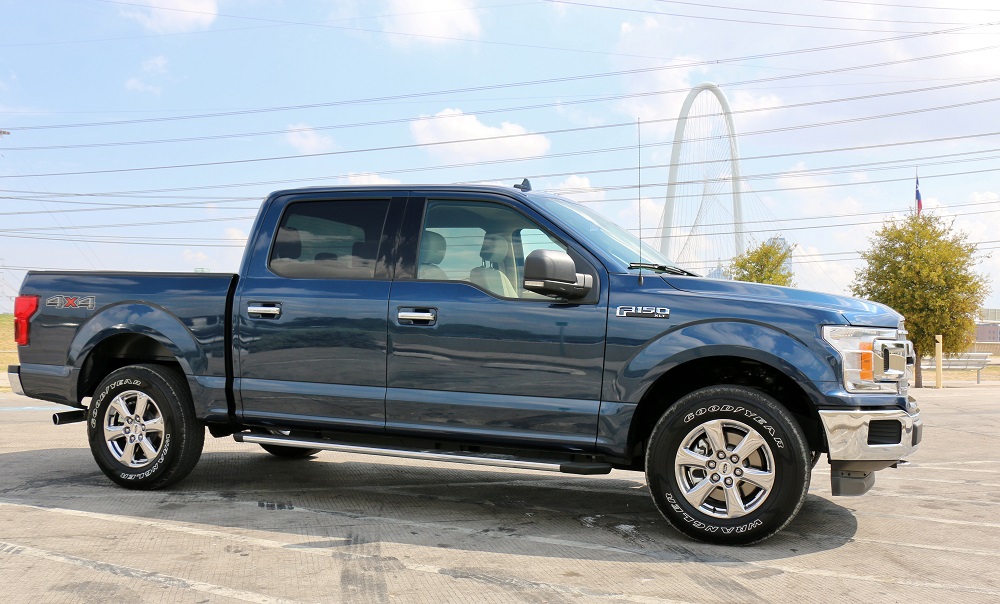
Ford has put so much work and engineering into the 2018 F-150 that it’s a shame I had such a short time to shake it down. I’m looking forward to experiencing more of those changes in the near future – and bringing all of you on F150online a more in-depth review of the 2018 F-150 as soon as it hits the press fleet.
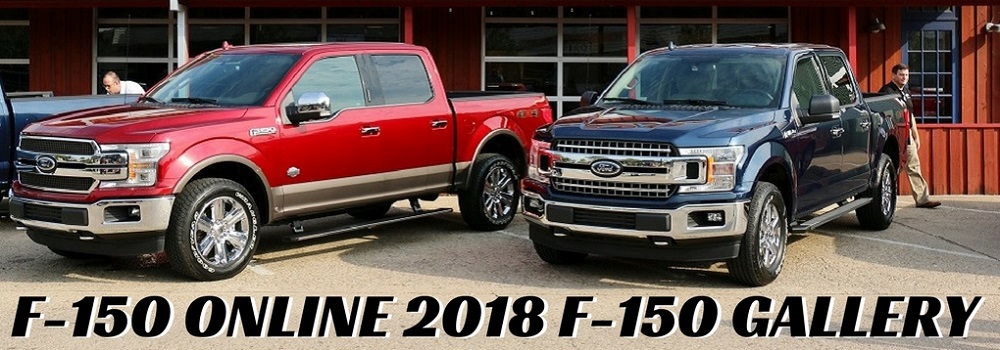
*With the available Heavy Duty Payload Package and 18-inch wheels.
**With the available 2.7L EcoBoost V6 Payload Package.

